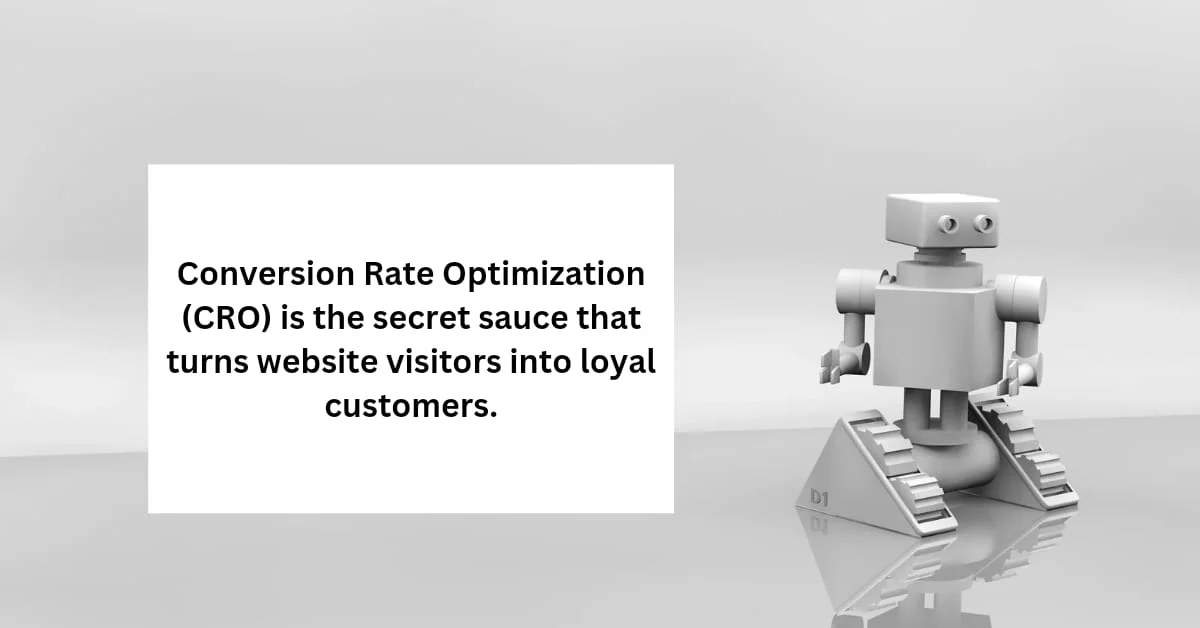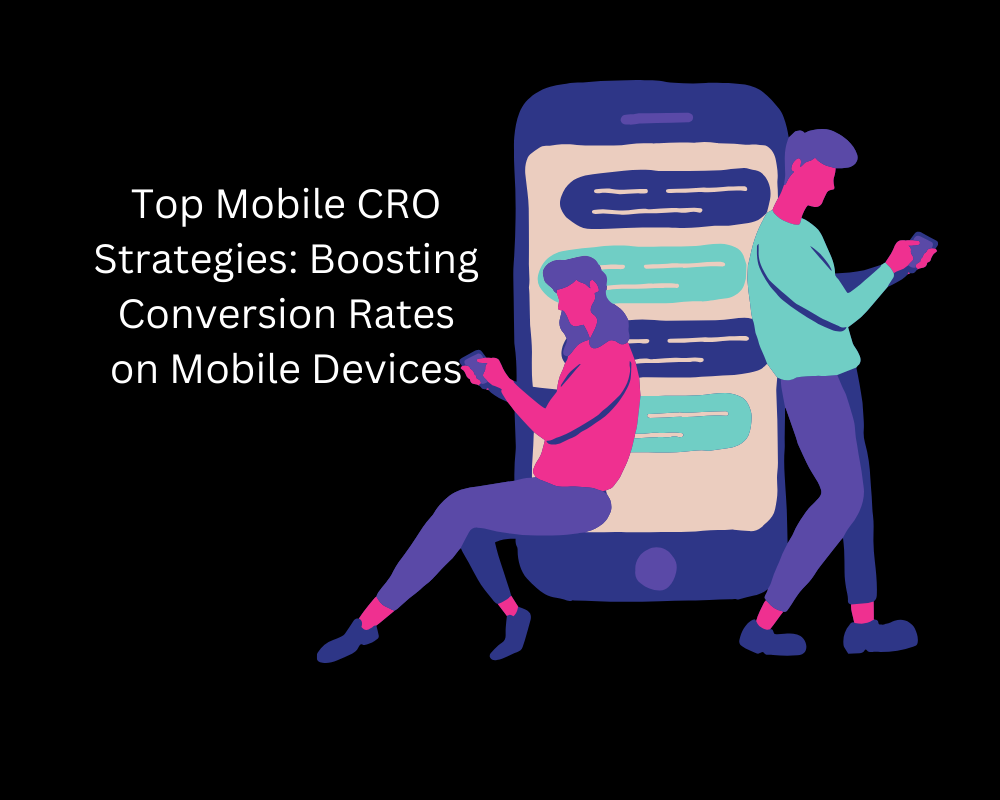Ever feel like your website’s conversion rates are stuck in a rut? Maybe you’ve optimized the content and polished the design, but those numbers aren’t budging. Here’s the thing—what works for one audience doesn’t always work for another. That’s where A/B Testing for CRO, or split testing, comes into play. Have you heard about it?
A/B testing is like having a crystal ball for your website’s performance. It’s a method that allows you to compare two versions of a webpage to see which one performs better. Imagine tweaking your call-to-action button or changing the headline—small adjustments like these can lead to big improvements in how many visitors turn into customers.
In this post, we’ll explore how A/B testing can be your secret weapon for improving conversion rates through data-driven decisions. Whether you’re just starting out or looking to fine-tune your CRO strategy, understanding the ins and outs of A/B testing can help you make smarter, more impactful changes.
Ready to dive into the world of A/B testing and see how it can transform your conversion rates? Let’s get started.
What is A/B Testing for CRO?

A/B testing, often called split testing, is a powerful method used to compare two versions of a webpage or app to determine which one performs better. At its core, A/B testing is all about experimentation. You create two variants—let’s call them Version A and Version B—and then divide your audience equally between them. By analyzing how each version performs, you gain insights into what drives user behavior.
Let’s break it down further. Imagine you have a landing page with a headline that reads, “Get Started Today!” You might wonder, “Could a different headline boost my sign-ups?” That’s where A/B testing comes in. You create a second version of the page with a new headline, say, “Join Us Now and Succeed!” Half of your visitors see the original headline, and the other half see the new one. After a period of testing, you analyze which version led to more conversions.
But why does this matter? Well, A/B testing is crucial in conversion rate optimization (CRO) because it lets data, not just intuition, guide your decisions. It’s one thing to guess what might work better, but it’s another to have solid evidence showing that a specific change increased conversions by, say, 20%. That’s the kind of insight that can turn a good website into a great one.
A/B testing isn’t just about changing headlines or colors, though. It’s a versatile tool that can be used to test anything from email subject lines to pricing strategies, all in the name of improving the user experience and, ultimately, your bottom line. By continually testing and refining elements of your website, you can incrementally improve your conversion rates over time, ensuring that every change you make is a step in the right direction.
Setting Up an A/B Test
So, you’re ready to dive into A/B testing and start improving your conversion rates. But where do you begin? Setting up an A/B test might seem straightforward, but there’s more to it than just splitting traffic between two versions of a page. To ensure your test is effective and yields actionable insights, it’s crucial to follow best practices.
Best Practices for Designing an A/B Test

Identify Your Objective:
- Start with a clear goal in mind. What are you trying to achieve? It could be increasing click-through rates, improving sign-up conversions, or even reducing bounce rates. The more specific your objective, the easier it will be to measure success.
Choose the Right Element to Test:
- Not everything on your page needs to be tested at once. Focus on one element at a time—like headlines, images, or call-to-action (CTA) buttons. This approach allows you to pinpoint what’s driving the change in user behavior.
Create a Strong Hypothesis:
- Your hypothesis is the backbone of your A/B test. It should be based on data and user behavior, not just a hunch. For instance, “Changing the CTA button color to red will increase sign-ups by 10% because it stands out more against the page background.”
Ensure Sample Size and Duration:
- To achieve statistically significant results, you need a large enough sample size. A good rule of thumb is to run your test until you have at least 100 conversions per variation. Additionally, avoid cutting your test short; aim to run it for at least two weeks to account for any fluctuations in user behavior over time.
Keep External Factors in Mind:
- Consider any outside influences that could skew your results, such as holidays, sales promotions, or changes in traffic sources. These factors can impact user behavior and make it difficult to attribute changes solely to your test.
Selecting Variables to Test
Choosing the right variables is key to a successful A/B test. Here are some common elements to consider:
- Headlines: Often the first thing visitors see, headlines can significantly influence engagement. Test different wordings, lengths, and tones.
- Call-to-Action Buttons: The design, color, and wording of your CTA buttons can make or break a conversion. Test variations to see which drives more action.
- Images and Media: Visual elements play a big role in user engagement. Test different images, videos, or placements to see what resonates best.
- Forms: Length and complexity of forms can impact whether users complete them. Test shorter vs. longer forms, required fields, and layout changes.
Tools for A/B Testing
Fortunately, you don’t have to conduct A/B testing manually. Several tools make the process easier and more accurate:
- Google Optimize: A free, user-friendly tool that integrates with Google Analytics, perfect for beginners and small businesses.
- Optimizely: A powerful platform that offers advanced features like multi-page testing and personalization options, ideal for larger enterprises.
- VWO (Visual Website Optimizer): A comprehensive tool that not only supports A/B testing but also includes heatmaps and user recordings to help you understand visitor behavior.
With the right approach and tools, setting up an A/B test becomes a systematic process that can lead to meaningful improvements in your website’s performance. Remember, the goal is to make data-driven decisions that enhance the user experience and boost conversions.
Interpreting A/B Test Results
Once your A/B test has run its course, it’s time to dive into the data. But analyzing those results isn’t just about picking the version with the higher conversion rate. It’s about understanding what the data is telling you and using that information to make informed decisions that can enhance your site’s performance over the long term.

Analyzing Data: How to Read and Understand Test Results
When you first look at your A/B test results, the numbers might seem straightforward. But here’s what you need to focus on:
- Conversion Rate: This is the percentage of visitors who completed the desired action (e.g., clicked a button, filled out a form) on each version of your page. Compare the conversion rates of Version A and Version B to see which one performed better.
- Uplift: Uplift refers to the percentage increase or decrease in conversion rate when comparing the test variation to the control. For example, if Version B’s conversion rate is 15% and Version A’s is 12%, the uplift is 25% ((15-12)/12 * 100 = 25%).
- Confidence Level: This metric tells you how likely it is that the results are not due to random chance. A standard confidence level in A/B testing is 95%. If your test achieves this, it means there’s a 95% chance that the results are reliable, and not just a fluke.
Statistical Significance: What It Is and Why It Matters
Statistical significance is crucial in A/B testing because it tells you whether the difference in performance between your two variations is meaningful.
- Achieving Statistical Significance: A result is considered statistically significant if it’s unlikely to have occurred by chance. This is usually indicated by a p-value of less than 0.05, meaning there’s less than a 5% probability that the observed difference is due to random variation.
- Waiting for Significance: It’s tempting to declare a winner early, especially if one version is ahead after a few days. However, it’s important to let your test run its full course to ensure the results are truly significant. Cutting a test short can lead to false conclusions and poor decision-making.
Decision-Making: Applying Test Results to Make Informed Decisions
After analyzing the data and confirming that your results are statistically significant, the next step is to implement the winning variation. But what if the results are close, or neither version shows a clear advantage?
- Implementing the Winner: If one variation clearly outperforms the other, it’s usually a no-brainer to implement the winning version. But don’t stop there. Consider testing additional variations to continue optimizing that element of your site.
- When Results Are Inconclusive: If the results are too close to call or not statistically significant, you may need to reevaluate your hypothesis or test other variables. Sometimes, inconclusive results can indicate that the tested element isn’t as impactful as you thought, and your efforts might be better spent elsewhere.
- Continuous Testing: The end of one test should be the beginning of another. A/B testing is an ongoing process of refinement. By continuously testing and iterating, you can gradually improve your conversion rates and overall site performance.
Interpreting A/B test results accurately is essential for making data-driven decisions that can lead to real improvements in your business outcomes. It’s not just about finding a winner but understanding why one version performed better so you can apply those insights to future tests.
Common Mistakes to Avoid in A/B Testing
A/B testing can be a game-changer for improving conversion rates, but it’s not without its pitfalls. Even seasoned marketers can make mistakes that lead to skewed results or missed opportunities. To help you get the most out of your A/B testing efforts, let’s explore some common mistakes and how to avoid them.

Pitfalls and Challenges: Misconceptions and Errors That Can Skew Results
Testing Too Many Variables at Once
- One of the biggest mistakes is trying to test too many elements at the same time. While it might seem efficient, testing multiple variables simultaneously can make it impossible to determine which change was responsible for any observed difference in performance. Instead, focus on one variable at a time to get clear, actionable results.
Running Tests Without a Clear Hypothesis
- Jumping into A/B testing without a solid hypothesis is like sailing without a map—you might end up somewhere, but it’s unlikely to be where you want to go. A strong hypothesis should be based on data and user behavior, not guesswork. For example, “Changing the product description format will increase conversions by simplifying the user experience.”
Ignoring Sample Size and Duration
- Rushing to conclusions before reaching a statistically significant sample size is a common mistake. A test that runs for too short a time, or with too few participants, might not provide reliable results. Patience is key—ensure your test has enough data to be meaningful before deciding on a winner.
Not Segmenting Your Audience
- Different segments of your audience may respond differently to the same test. For instance, new visitors might react differently from returning customers. If you don’t segment your audience, you could miss these nuances, leading to generalized conclusions that don’t apply across the board.
Over-testing and Under-testing: Finding the Right Balance
- Over-testing: It’s easy to get carried away with testing every little detail on your site, but this can lead to diminishing returns. Testing small, inconsequential elements might not move the needle in a meaningful way, and can distract from bigger opportunities. Focus on changes that have the potential to significantly impact conversions.
- Under-testing: On the flip side, under-testing—or not testing enough variations—can leave potential improvements on the table. If you only test one or two variations, you might miss out on discovering a version that truly resonates with your audience. Don’t be afraid to experiment with bold changes, as long as they’re backed by a solid hypothesis.
Example Scenarios: What to Watch Out for in Real-World Testing
The “False Positive”
- You run a test and see a quick spike in conversions—great, right? But if you cut the test short and declare a winner too soon, that spike might just be a random fluctuation, not a true improvement. Always ensure your results are statistically significant before making changes.
Misinterpreting Seasonal Trends
- Suppose you run an A/B test during a holiday season, and one version outperforms the other. However, the result might be influenced by the seasonal behavior of your users, rather than the changes you tested. It’s important to account for such factors and, if possible, run your tests during more stable periods.
Ignoring Interaction Effects
- Let’s say you run a successful test on your homepage’s CTA button and then another on your product page’s layout. Both changes individually boost conversions, but when combined, the overall effect is less impressive. This is known as an interaction effect, where changes in one area affect the outcomes of others. It’s crucial to consider how different tests might interact with each other.
Avoiding these common mistakes can significantly enhance the effectiveness of your A/B testing efforts. By focusing on well-structured tests, patient analysis, and thoughtful implementation, you can maximize your chances of achieving meaningful improvements in your conversion rates.
A/B Test Examples
Now that we’ve covered the theory and best practices, let’s dive into some real-world examples. These case studies will illustrate how A/B testing can lead to substantial improvements in conversion rates, and sometimes, surprising insights.

Case Study 1: A Successful A/B Test That Improved Conversions
The Scenario: An eCommerce company was experiencing low conversion rates on its product pages. Despite strong traffic, only a small percentage of visitors were completing their purchases. The team hypothesized that the product descriptions were too lengthy and overwhelming for users, causing them to leave before making a purchase.
The Test: To address this, they conducted an A/B test comparing two versions of the product page:
- Version A (Control): The original page with detailed product descriptions.
- Version B (Variation): A simplified version with bullet points highlighting key features and benefits.
The Result: After running the test for several weeks and gathering a statistically significant sample, Version B outperformed the control by 25%. The streamlined product descriptions made it easier for visitors to quickly understand the benefits, leading to higher conversions.
Key Takeaway: Sometimes, less is more. Simplifying content and focusing on key benefits can help guide users toward making a decision faster, improving conversion rates.
Case Study 2: Lessons Learned from a Failed A/B Test
The Scenario: A SaaS company wanted to increase sign-ups for its free trial. They believed that adding a countdown timer to the sign-up page would create a sense of urgency and drive more conversions.
The Test: The team tested two versions of the sign-up page:
- Version A (Control): The original page with a standard sign-up form.
- Version B (Variation): The same page with a countdown timer urging users to sign up within a limited time frame to claim a special offer.
The Result: Surprisingly, Version B underperformed compared to the control, with a 10% decrease in sign-ups. Instead of creating urgency, the countdown timer seemed to pressure users, causing them to leave the page without signing up.
Key Takeaway: Not all urgency tactics work for every audience. In this case, the added pressure backfired, highlighting the importance of understanding your audience’s behavior before implementing such strategies.
Lessons from Major Brands: How Industry Leaders Use A/B Testing Effectively
Amazon’s Continuous Testing Approach
- Amazon is renowned for its commitment to A/B testing. They continuously test everything from the layout of product pages to the wording of promotional messages. One notable test involved the placement of customer reviews. By moving reviews higher up on the page, they saw a significant increase in purchase rates. This shows that even small changes, when tested properly, can lead to big wins.
Netflix’s Personalization Experiment
- Netflix uses A/B testing to enhance its recommendation algorithm. In one test, they experimented with different thumbnail images for the same movie or show, tailored to different user segments. By personalizing these thumbnails based on past viewing behavior, they significantly increased viewer engagement. This example underscores the power of personalization in improving user experience.
Google’s 41 Shades of Blue
- Google famously tested 41 different shades of blue for its search results links to determine which one users clicked on most. This rigorous testing process led to a color choice that maximized clicks, illustrating the lengths to which successful companies go in their A/B testing efforts.
These examples demonstrate the transformative potential of A/B testing when done right. Whether simplifying content, understanding your audience, or fine-tuning elements like design and messaging, A/B testing can lead to substantial improvements in conversion rates and overall user experience.
In Summary
A/B testing is more than just a tool—it’s a strategy that empowers you to make data-driven decisions, leading to measurable improvements in your website’s performance. From understanding the basics to setting up and interpreting your tests, this powerful method helps you identify what truly resonates with your audience.
We’ve seen how small changes, like simplifying product descriptions or tweaking the placement of elements on a page, can significantly impact conversion rates. We’ve also learned from failed tests, which remind us that knowing your audience and carefully considering the user experience are crucial in A/B testing.
Remember, the real strength of A/B testing lies in its iterative nature. It’s not about finding a one-time fix but about continually optimizing and refining your website to better meet your users’ needs. Whether you’re an eCommerce giant like Amazon or a growing SaaS company, A/B testing is a must-have in your conversion rate optimization toolkit.Final Thoughts: Experimentation is the key to unlocking higher conversions and better user engagement. By adopting a culture of continuous testing, you can ensure that your website evolves alongside your audience’s expectations, leading to sustained success.












